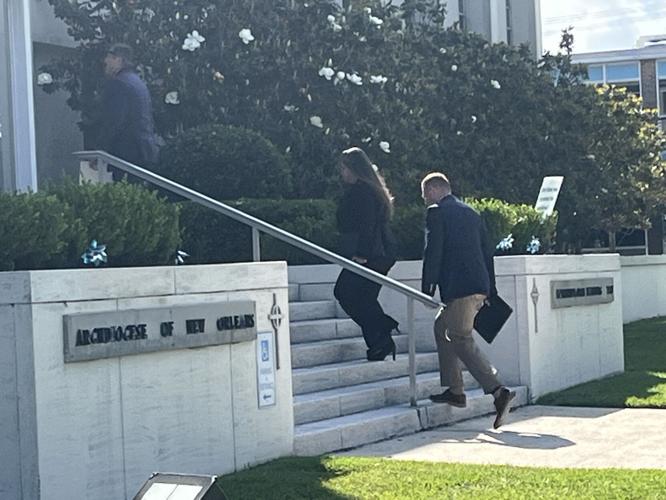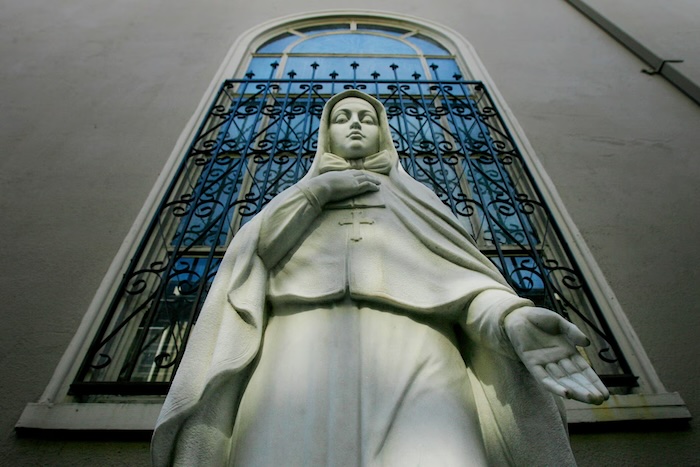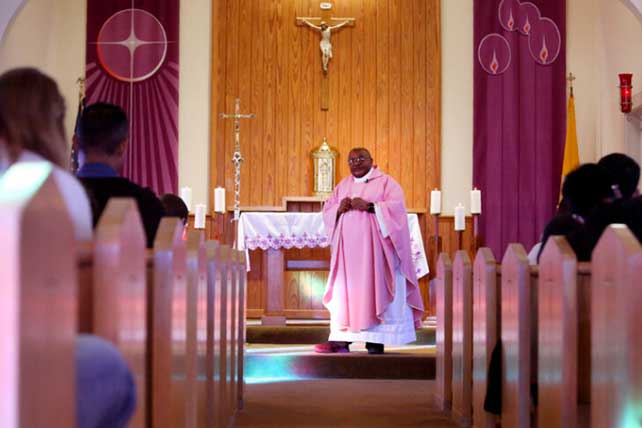— Attorney General Bob Ferguson filed a petition Thursday to compel the Catholic Church to hand over files and answer questions under oath.

By Lewis Kamb
Washington state Attorney General Bob Ferguson announced Thursday he’s seeking a court order to force the Seattle Archdiocese to turn over files on priests accused of sexual abuse and make its archbishop answer questions under oath as part of a sweeping probe into how the state’s three Catholic dioceses handled claims of child sex abuse.
Ferguson’s office is looking into “allegations that the Catholic Church has facilitated and attempted to cover up decades of pervasive sexual abuse of children by Church leaders in Washington State,” his office’s petition for a court order states.
Because the Seattle Archdiocese “refuses to cooperate” with civil subpoenas issued by his office last summer and last month, Ferguson went public with his probe Thursday by filing a legal petition in King County Superior Court that seeks an order “to enforce the subpoena,” his office said in a statement.
If obtained, such a court order would legally compel Seattle Archbishop Paul Etienne to appear for a deposition and force Washington’s largest Catholic diocese to produce a long list of internal records, including its trove of secret archives on clergy sexual abuse allegations dating back decades.
“Washingtonians deserve a public accounting of how the Catholic Church handles allegations of child sex abuse, and whether charitable dollars were used to cover it up,” Ferguson said at a press conference. “As a Catholic, I am disappointed the Church refuses to cooperate with our investigation.”
The archdiocese issued a statement Thursday disputing some of Ferguson’s statements as inaccurate and saying it was blindsided by his petition because its lawyers had been cooperating with his office on “a shared legal analysis” for the investigation.
“Today’s press conference was a surprise to us since we welcome this investigation and have been working closely with the Attorney General’s team for months now,” the statement said.
Ferguson’s office said it’s also prepared to seek court orders against the two other Catholic dioceses in Washington, in Yakima and Spokane, if either or both don’t comply with their latest subpoenas later this month.
With Thursday’s action, Ferguson became the 23rd attorney general to publicly announce an investigation into the Catholic Church in his or her state, his office said.
Long called for by sexual abuse survivors and advocacy groups, Washington’s investigation is the first outside probe of the Seattle Archdiocese’s handling of clergy abuse, advocates for survivors say. The archdiocese has publicly identified 83 clergy members “as credibly accused” sex offenders, based on its own private evaluations. But for years, it has resisted advocates’ calls and media requests to release its secret files about clergy abuse or allow independent investigators to inspect them.
Ferguson noted other attorneys general investigations have revealed “dramatically greater numbers” of credible sexual abuse cases than what local dioceses have made public. An investigation in Illinois last year revealed more than four times as many substantiated child sex abuse cases than what Catholic dioceses in the state had divulged, he said.
Ferguson’s announcement also marked the first time he has acknowledged the existence of his investigation, which has been active since at least July.
In February, his office declined to confirm or deny the probe after a group of anti-clergy abuse activists held a press conference to contend that he was hiding the investigation from the public.
The announcement from Ferguson, a Democrat who is running for governor, came two days after NBC News pressed his office to disclose copies of the subpoenas that a reporter requested under Washington’s Public Records Act in March. Without confirming whether they existed, the attorney general’s office delayed its disclosure for more than two months by contending it was still searching for records.
Ferguson’s subpoenas, made public for the first time this week and shared with NBC News late Wednesday, clarify the legal underpinning for the probe. The first subpoena cites his office’s authority to “investigate transactions and relationships of trustees and other persons” under Washington’s Charitable Trust Act, which regulates certain tax-exempt corporations and entities that hold charitable assets in trust.
A civil subpoena has never been used in Washington to investigate a religious organization, according to a legal analysis provided to Ferguson’s office and obtained by NBC News.
Ferguson’s approach is similar to one that New York Attorney General Leticia James used in 2020 to sue the Catholic Diocese of Buffalo, based on state civil laws regulating charities. James’ suit led to a landmark settlement in 2022.
Ferguson’s first set of subpoenas to Washington’s Catholic dioceses each include a cover letter dated July 26, signed by him and sent separately to Etienne, Yakima Bishop Joseph Tyson and the Rev. Victor Blazovich, the vicar of finance for Spokane’s bishop.
Ferguson’s letter contends that while Washington’s Charitable Trust Act exempts religious organizations, “the exclusion does not apply in the context of child sexual abuse, a heinous violation with no connection to religion or an entity’s religious status.”
The accompanying subpoenas list demands and instructions for each diocese to produce more than 20 categories of records, including all reports about sexual abuse allegations made against priests and other clergy members, employees and volunteers since Jan. 1, 1940.
The records demanded include those containing allegations against priests and others whom the dioceses already have publicly identified as “credibly accused” sexual abusers, as well as those they have not. The subpoenas also demand the dioceses to turn over communications with the Vatican about sexual abuse claims, and records showing church policies for compensating victims who alleged sexual abuse and accounting for any such payments that have been made.
All three dioceses had initially been given until Aug. 25 to comply with the first subpoenas, the records show.
“The dioceses only responded with information that was already public. They did not fully respond to the subpoena,” Ferguson’s office said in its statement.
Ferguson’s office also released copies of a second set of “amended subpoenas” that were issued last month to the three dioceses. Each includes demands for production of all previously identified records, plus five additional categories of records mostly about finances and accounting.
The Seattle Archdiocese had been given until May 10 to comply with Ferguson’s latest subpoena but notified the office this week that it objects to the subpoena and would not be complying, according to the attorney general’s office.
The deadline for the Yakima and Spokane dioceses to comply with their latest subpoenas is May 22, the records show.
Spokane’s diocese said in a statement Thursday that it has nothing more to publicly divulge since a Chapter 11 bankruptcy case in 2004 “clearly revealed how the Diocese of Spokane dealt with all historic cases of sexual abuse.”
A statement from Yakima’s diocese separately challenged Ferguson’s subpoenas as invalid and unconstitutional, adding “there are already many public resources available for the information being sought.”
“We cannot publicize everything in our records, however, to respect the privacy and confidentiality rights of, among others, both victims and falsely accused clergy,” the Yakima Diocese’s statement added. “And so, we will vigorously assert our First Amendment rights.”
Complete Article ↪HERE↩!




